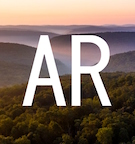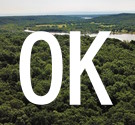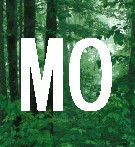
|
||||||||||||||||||
|
|
||||||||||||||||||
|
| ||||||||||||||||||
  








  









| ||||||||||||||||||
BFRO's Pacific Northwest Newsletter
Research Near Mt. Rainier, Washington
by Jeffrey Lemley
|
The following excerpts from the journal of the BFRO's Jeff Lemley relate to field investigations in the Glacier View Wilderness, near Mt. Rainier. Oct. 4, 1999 I just received some new information from Don Anderson, a BFRO volunteer in the Puget Sound area. Don has been following up on a new cave in the Mt. Rainier area, that a friend told him about. This cave is allegedly quite large, and does not appear on any maps. It has been speculated that this cave could serve as shelter for a sasquatch population in the area, so we are trying to locate it for possible photo monitoring. While trying to locate this cave a week and a half ago, Don stumbled onto some tracks. I do not have the exact measurements yet, but one track was 20.5 inches long, and wider than his glasses (8-10"), which he placed in the track. The impression was over 4 inches deep, in fairly solid soil. This last weekend, Don returned to locate the cave again, and came across some very fresh tracks (he figures under 2-3 hours). The tracks were headed up an embankment, with a 60 degree pitch. Only the front of the foot was visible, due to the subject climbing the steep incline. All five toes were clearly visible. The ball of the foot was about 11" across. Of course, no length could be obtained due to the lack of heal print. He stated that the stride length heading up the embankment was about 7 feet. Don did not have any casting materials with him at the time, but did take several photos of the prints. Oct. 6, 1999 Here are my findings after visiting Mt. Rainier National Park, the location the tracks were discovered in: 1. A few large impressions were noted (18-20"), but were inconclusive. Tracks appeared to be at least 2 months old, some as much as a couple of years or more. Stride lengths ranged 6 - 7 feet. 2. One smaller, partial track (juvenile?) was found in a culvert drainage ditch. The toes of the print were eroded, as the subject that had made them had been standing at the edge of the stream caused by the rain run-off, and its toes had been in the stream. The track was visible from the heel to the ball of the foot, so we were able to extrapolate the approximate overall length as roughly 12". Width was 5" at the ball. There were other substantial ground disturbances in the area, but nothing clear. 3. Both sets of tracks were inconclusive, and uncastable. 4. Several broken trees (10 - 12 feet tall) were noted in the area. Most broken at 6 - 6 1/2 feet off of the ground. For the first time, I was at a loss to locate another plausible source to attribute these particular breaks to. There were no other trees around the individuals to facilitate snowfall from a higher level, and they were not on a steep hill that would accommodate snowpack sliding down during spring thaw and causing the breaks. Even if the hill were steep enough, the breaks left the tops of the trees either pointing sideways, or back up the mild slope. This is not consistent with tree breaks caused by snow slides. They were also away from the road, and consequently any vehicle or piece of machinery that could strike them in passing. Ground disturbances were noted around the trees, but none were conclusive. NOTE: One thing that we found interesting is that these trees were broken over an extended period, ranging from 2 - 3 years ago, to a few days ago. It's possible that one or more bigfoots have been living in this area for the past couple of years. The varying ages of the different impressions that were found also support this theory. In summary, nothing conclusive was obtained, but I do feel that the inconclusive evidence warrant future investigations and monitoring of this area.
Oct. 9-10, 1999 Travelled back to Mt. Rainier to meet up with Don Anderson. I was accompanied by Bob and Autumn Williams. We drove up to the area where we had found the impressions earlier in the week, and set up camp. We managed to look around a bit before the sun went down, but didn't see much. Autumn and Bob thought they heard something scream way off in the distance, but were unsure. We broadcasted some calls from camp after dark. Don and Autumn thought they heard one response, once again way off in the distance, but were unsure. Don placed a bunch of fruit out away from the campsite, in hopes of attracting something in. The night passed uneventfully. The next day, we did some more scouting around, and found some more broken trees. We also found a very large pile of stool, that seemed a little large even for a bear. It appeared that whatever had passed the stool had been subsisting primarily on berries. Autumn collected the sample for analysis. We did find a few more impressions, including a series of impressions coming up a steep embankment along side the road. The impressions were old, but obviously had been made by something very large. They were fairly deep (1.5-2"), about 18" long, and 8" wide, with a stride length of about 6 feet. Autumn managed to capture all of them on film, but none were castable.
Oct. 23-24, 1999 I travelled up to Mt. Rainier, WA, again this weekend to meet up with Don Anderson, to try and establish the location of the infamous cave. Don did manage to enlist the help of 3 volunteers from the U.S. Army's 2nd Ranger Battalion, stationed at Ft. Lewis, WA. We pointed out the suspected cave location (from the road, you can see a shadowy overhang on a cliff located about 1 mile away and up a basalt-laden, extremely steep hill) to the trio, who were extremely fit and well equiped (night vision, thermal scopes, climbing gear, etc.). Their round trip took about 5 hours, and they discovered that the "cave" that we were looking at was just a shadowed overhand on the cliff face. So, we are left having to recontact the original cave discoverer, who lives in Texas, and try to get better directions to the cave. Don and I did find some fairly fresh, but uncastable, prints on Sunday afternoon. The rain from the previous night had eroded them substantially. They came up an embankment, crossed the road, and proceeded up the upper embankment and into the huckleberry fields. We found one track below the road, one on the soft bank above the road, and one in the berry bushes. The stride length, going uphill, was about 7 feet. You could make out toe cuts at the leading edge of the print, but the rest had been washed away for the most part. We did broadcast some calls from our campsite Saturday night, and 2 of our Ranger volunteers thought they heard a response, but no one else heard it. Also, on our last trip to the area, on Oct. 9 & 10, Don placed several pieces of fruit around the campsite, incl. some large pumpkins. Yesterday, we found the remains of one of the pumpkins (about a 20 pounder) about 60 yards from where it had been left. AND, we found it at the exact same spot that we had found a partial print 2 weeks prior, next to a culvert (water source?). All that remained of the pumpkin was the stem and some of the skin (the meaty part had been scraped clean) from around the top, and curiously, the seeds. Maybe Sasquatch doesn't like pumpkin seeds? More fruit was left at the campsite by Don (incl. more pumpkins). SUMMARY:
|